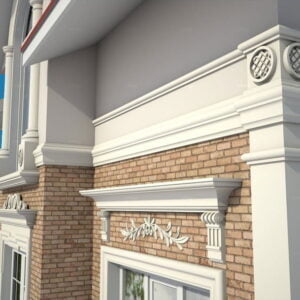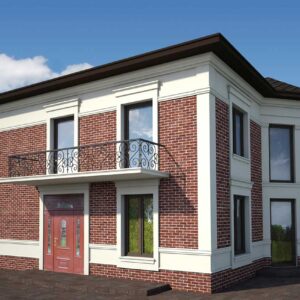The high density of urban development and the insatiable desire to use every square meter for construction force architects and designers to resort to vertical landscaping of the walls. This allows you to soften the grayness of city streets with green flowers of climbing plants.

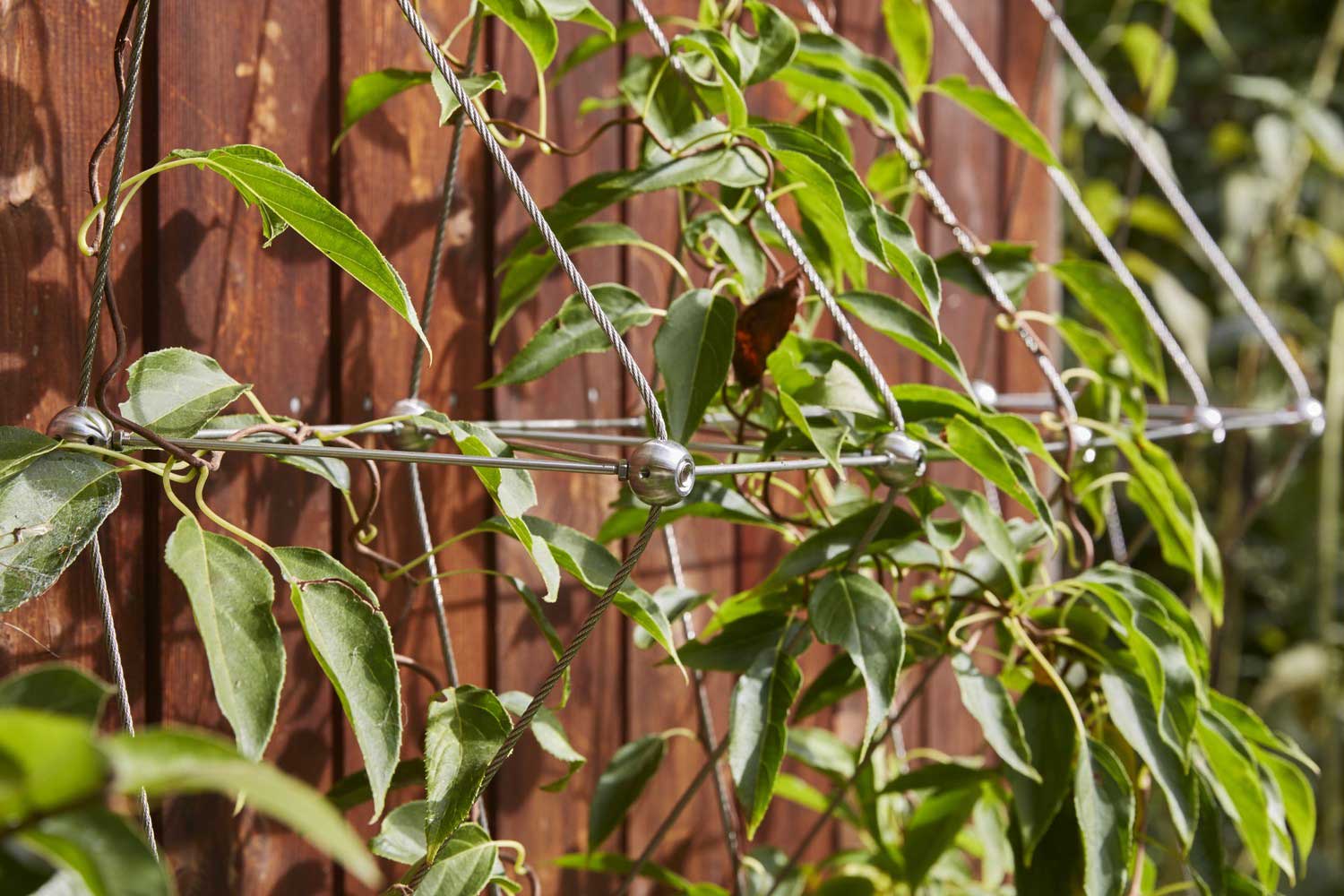
tasks solved by landscaping vertical wall surfaces
Vertical gardens have become part of many innovative design solutions. The planes of walls, fences, and fences, located vertically, are a good platform for landscaping houses and plots. With a lack of space in the courtyards, these ideas look not only original but also logical decision to bring landscaping of the facade walls to the streets of the city.


Vertical vegetation looks not only like a natural and aesthetic decoration of the facade of the house but also performs many other useful functions. Green plants block part of the ultraviolet solar radiation. The indoor climate improves, making the air fresher and cooler. The need for air conditioning is decreasing. This saves up to a third of the energy costs for the air conditioner.

Plants lower the temperature of the external walls of buildings, reducing the flow of heat into the rooms. Foliage filters out sunlight, creating unusual patterns on the walls and a playful mood. If deciduous vegetation is used for landscaping, then in summer the rooms will be shaded, and in winter the sunlight will freely enter the house.

Vertical landscaping of the walls enriches the surrounding airspace with oxygen, creating more comfortable living conditions. Foliage absorbs sound: studies show that green plants on the façade reduce background noise by up to 50 dB. So the noise of the street and the sounds of transport will not interfere with the privacy of the residents of the house.
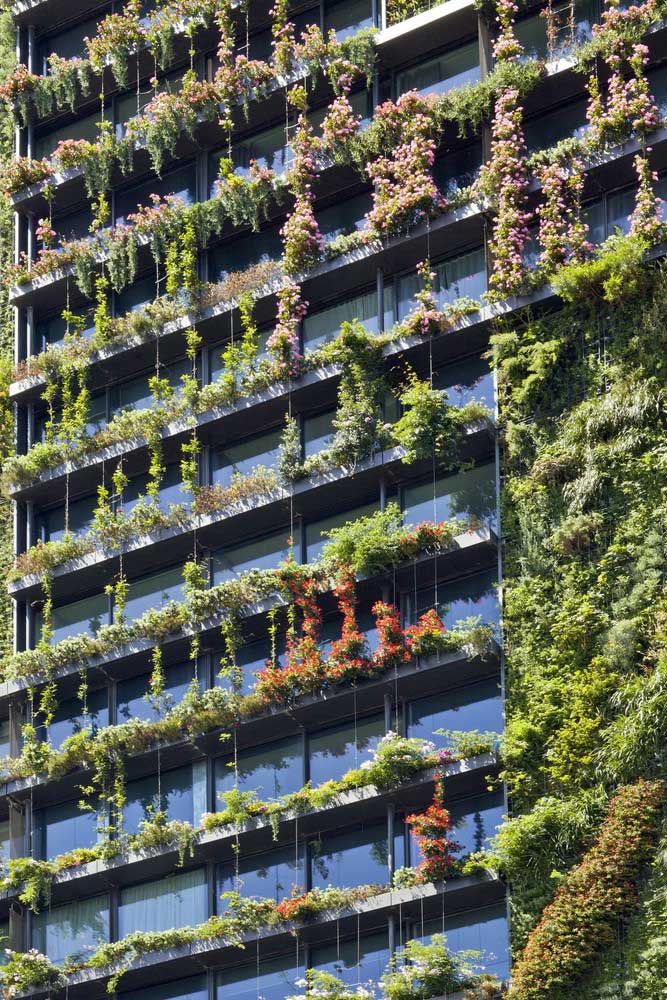
The appearance of the building can change its colors depending on the time of year. This is achieved by using various plants and flowers for landscaping, which when flowering beyond recognition will transform the facade of the building. Flowering plants will attract bees and other insects, which will create a unique atmosphere of unity with nature.

design, technological and constructive methods of vertical gardening of walls
Great opportunities for landscape design are opened using modern methods of growing plants and innovative building solutions. In some vertical garden systems, pockets are used in the stone and concrete pavement of houses. These depressions are filled with a substrate for the development and growth of plants.


The most common method for landscaping a facade is metal nets and cables, which are attached to external walls in various ways. For a vertical urban garden, lightweight structures made of galvanized metal and stainless steel are used. They are placed at a distance of 5-20 cm from the facade to ensure free air circulation and space for plant growth.


The reliability and durability of the fastenings of a vertical wall of greenery are provided by modern technologies and materials. Metal support structures are resistant to corrosion, temperature extremes, and climatic anomalies.


It’s important to know! Each type of vine requires special support methods. There are vines that cling to the surface without any construction. Other plants encircle the supports with stems, fasten with leaves and even spikes. Therefore, the decision to green the facade with a certain type of plant should be reasoned and justified. Climbing plants in the vertical landscaping of the wall should be adapted to the local climate and architectural features of the building.





VERTICAL GARDENING OF THE WALLS – A CORNER OF WILDLIFE IN THE URBAN LANDSCAPE
A vertical garden is a technique for vertical landscaping surfaces using predominantly climbing plants. The result of this creative process is a photo wall. The first nerd to discover the theory that plants can grow vertically was Patrick Blanc.
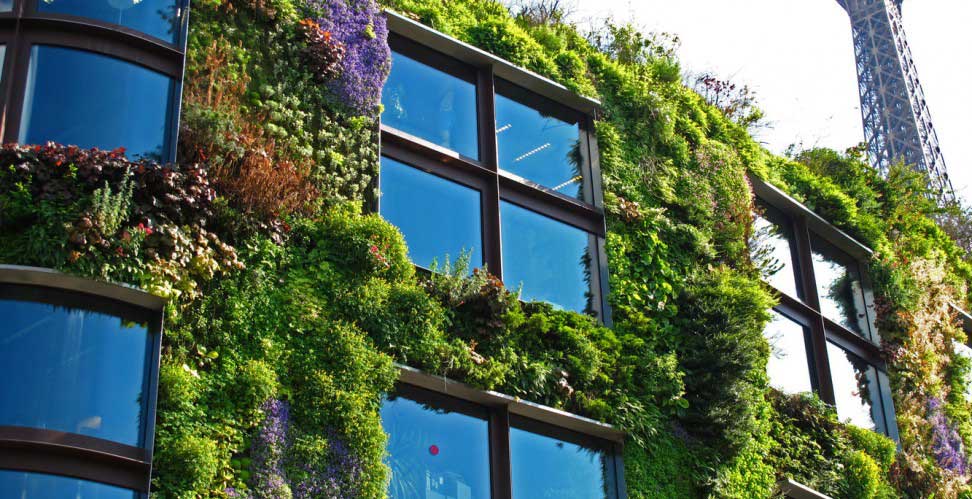
In his opinion, if some plants can grow and bloom almost without soil, then they can perfectly adapt to decorate the facades of our houses.
vertical hydroponic garden – WHAT IS IT?

Vertical gardening today is a very fashionable trend in landscape design in the West. The eternal problem of “grandmother” – Europe – scanty plots of land – is forcing Western gardeners to raise their heads to the sky, looking there for free square meters. And they find, I will tell you, and they do it! But, it’s better to see it once. Some of them are simply masterpieces of landscape art, and it is almost impossible to reproduce them without special instructions and equipment. But others are fairly simple vertical flowerbeds. Landscaping will only benefit if you use at least one of the elements of vertical landscaping to create it.
green vertical wall – CONSTRUCTIONS

In addition to vertical flower beds, it includes:
- The simplest option is plants that are woven along the walls of buildings (highlander, for example);
- Creepers on wallpaper, arches, pergolas;
- Hanging boxes, flower pots, containers;
- Hedges.
VERTICAL GREENING PROS

- BEAUTIFULLY. Live texture for wall decoration, and various color combinations.
- ACTUALLY. It will be special, and for public institutions to stand out among competitors and get more profit.
- USEFUL. Plants absorb toxic gases and purify and cool the air. Positive effect on mood.
- GOOD ACOUSTICS. Leaves of plants affect the attenuation of sound in the room, absorbing and scattering it

A vertical flowerbed is, in principle, the same containers of various shapes, which in combination form an interesting green or flowering leaf, and could be an ordinary flower garden if placed horizontally.

Consequently, these flower beds are created from tiered containers with plants. For flower beds, it’s best to use an indoor grow tent to help them grow faster and better. They can take the form of walls, sculptures, screens, or pyramids. Today already in Ukraine they sell similar designs, both for the garden and for the home. Yes, yes, a vertical flowerbed can easily be arranged on the wall in the bedroom, living room, or even in the bathroom. And called phytocartinamas (those that are smaller) and phytostenams (those that are bigger).

But I digress from the topic. Today we are talking about vertical flower beds in the garden. These designs can be bought (the most advanced have built-in drip irrigation systems) separately or together with plants, or you can do it yourself. For example, a flower bed tower with petunias.

Which plants to choose for vertical flower beds?
Inventive gardeners have learned to grow even vegetables in vertical flower beds. In this case, of course, they are called not flower beds, but gardens. Imagine a lot of vegetables, herbs and herbs can be grown right in your pockets! More precisely, on such special suspended structures with pockets that are hung on the wall of a house, a barn, or any other building.

You can sew it yourself or buy a shoe pendant in a store and attach it to a piece of pipe or a curtain rod. The fabric must pass through water. If not, you can make small holes so that excess water flows through them. A small container should be located below, where water will flow after irrigation. This is the case if such a vertical city is located not on a garden fence, but on a balcony, for example. We fill the pockets with compost, then we plant seedlings in them. You can sow plants and seeds.

The following plants are suitable for vertical flower beds:
- Popular creepers (girl’s grapes, clematis, morning glory, etc.);
- nasturtium;
- petunia;
- ferns;
- asters
- dahlias;
- majors;
- many other plants.
When choosing them, the following factors should be considered:
- Small root;
- compatibility;
- Uniform requirements for the level of humidity and the presence of the sun.

ADVANTAGES AND DISADVANTAGES OF VERTICAL CLUBS
First, the pros. It:
- High decorativeness and variety of organization options;
- Saving space, which is of great importance for a small yard;
- The ability to move from place to place;
- Minimal care. You don’t even have to water when organizing a drip irrigation system—from time to time – pruning plants and periodic top dressing.
But there is also a fly in the ointment. It is the same as in the case of vertical beds. Namely:
- Without drip irrigation will have to be watered very often. Once missed in the heat – and all, bye, a beautiful vertical flowerbed 🙁;
- The limited soil volume significantly narrows the circle of plants that can be used for vertical flower beds;
- Mandatory top dressing. Without it, plants will wither over time;
- Perennial flowers are not very suitable for such flower beds, because in winter the ground in small containers, as a rule, freezes. The way out is either annual plants or wintering of the entire structure with perennials in a suitable room.
![[ArtFacade]](https://artfasad.com/wp-content/uploads/2024/01/cropped-dom-100x100-1.jpg)

